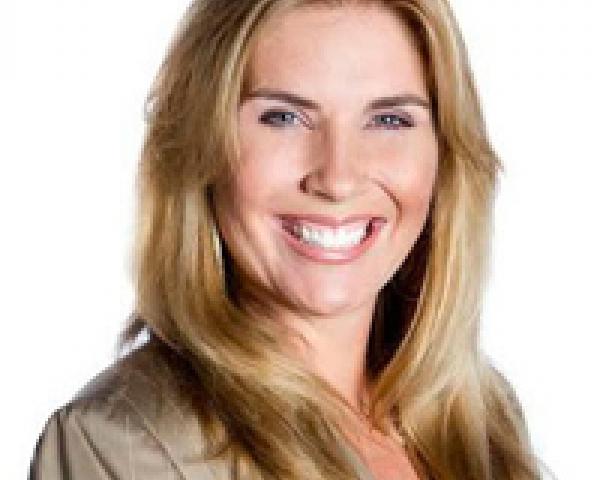For us it's very important that risks are taken into account when investment decisions are made. That's why risk assessments are mandatory for all investment decisions. Risks are identified and evaluated by both the project team and the back-office departments, including legal, finance, scientists, strategy and others. This ensures a more objective and independent risk analysis when making investment decisions.
--Konstantin Dozhdikov, Head of Risk, RUSNANO
2. Strong Risk Management Culture
Human psychology and the ability of business managers to make decisions in situations of great uncertainty have a huge impact on risk management effectiveness. Nobel laureates D. Kahneman and A. Tversky, have conducted some exceptional research in the field of risk perception, showing that most people, consciously or subconsciously, choose to be ignorant to risks. Robust risk management culture is therefore fundamental to effective risk management. Take for example a large petrochemical company, which used online and face-to-face training to raise risk management awareness and competencies across all staff levels. The company also allocated resources to integrating risk management principles into the overall company culture. Another example is a government agency, which documented transparent discussion and sharing information about risks as one of the corporate values, which were later communicated to all employees. See also: Risk Management, in Plain EnglishTraining is one of the most important factors in the development of a risk management culture. Risk management can become an effective tool as soon as every employee understands what is it and how it applies to their personal area of responsibility. There are many different kinds of risk management training. It could be risk induction training offered to all new employees. Induction training should include a short explanation of the risks that might arise, information about a useful tool risk management and how to use it when making day-to-day business decisions. It is also useful to conduct separate specialized risk management training for department heads and key managers in order to help them integrate risk analysis into key business processes. The main thing is to remember that training is not supposed to be a one-time measure and, on the contrary, should be offered on a regular basis. Training sessions can be led by your company's own risk manager or an external party, but either way the trainers must possess relevant competencies and qualifications.
--Lubov Frolova, Head of Risk , Tekhnodinamika3. Disclosing Risk Information Another criterion for effective risk management is willingness and ability of an organization to document and disclose risk-related information both internally and externally. A mature company not only documents the results of risk analysis in the internal decision making processes but also discloses information about risks and their mitigation to relevant stakeholders, where appropriate, in external reporting or on the company website. Because actual risk information may be sensitive and contain commercial secrets, the focus of disclosure should not be on the risks themselves but rather on risk management framework, executive commitment to managing risks and culture of the organization. Many organizations tend to treat this formally, often copying and pasting risk management information in external reporting from year to year without any update. Remember that disclosure of risk management information allows companies to both make and save money. For example, the insurance market reacts positively to a company's ability to disclose information about the effectiveness of its risk management and control environment, offering a reduction in insurance premiums. Banks and investors also see risk disclosure in a positive light, allowing companies to lower their financing costs. One large mobile network operator takes risk reporting particularly seriously. Its approach changed after an IPO. To this day, risk reporting as part of the annual report is not just a recount of the typical risks within their industry sector, but a reflection of key risk management changes and achievements over the last period. Risk reporting is composed of two parts: 1) A general description of events linked to risk management within the company; and 2) A description of key risks facing the company over the year. In the first part, risk managers give a detailed description of significant risk management events that occurred within the company that year. For example, there could be a description of how closely the company is aligned with the ISO 31000:2009 principles, or how the company has strengthened its risk culture. The second part describes common risk categories facing the company. This should point out the typical risks in the industry sector as well as the most significant risks identified over the past year. Additionally, the description of each risk should include the status of mitigation actions taken to manage the risk, their effectiveness and the anticipatory measures that the company intends to take in the future. 4. Continuously Improving Risk Management The final criterion for effective risk management has to do with the continuous improvement of the risk management framework and the risk team itself. One investment fund was able to do this with the help of regular assessment of the quality and timeliness of its risk analysis, annual risk management culture assessments and periodic review of risk management team competencies. For example, professional risk management certification helps to boost risk team competencies. One of the reasons behind the need for constant risk management improvement is rapid development of risk management discipline. The ISO 31000:2009 standard is currently being reviewed by more than 200 specialists from 30 different countries, including experts from Russia and members of ISAR. Some of the suggestions for the new version of the standard include the greater need for integration of risk management into business activities, including decision making, and the need to explicitly take into account human and cultural factors. These changes could have a significant impact on many modern non-financial organizations, raising questions about their risk management effectiveness. See also: Risk Management: Off the Rails? Risk management, just like any other element of corporate governance, must be integrated into the overall management system of the organization. The ISO 31000:2009 international standard explicitly talks about the need for risk management to be adaptive, dynamic and iterative. As organizational risk maturity improves, so will the tools used by the organization to manage risks in decision making. Professional risk managers should not only develop risk management processes for the organizations but also improve their own risk management competencies. As I am writing this, work is being undertaken on the update of both of the most widely adopted risk management standards (ISO 31000:2009 and COSO:ERM 2004). New versions are expected to be available in 2017 and promise to revolutionize our current understanding of risk management, not necessarily in a positive way. My experience shows that participating in international conferences, training sessions and certification programs constitutes a good way for risk managers to keep themselves in top professional shape. I hope I will see you at the G31000 conference in Dubai on Oct. 12-13, 2016:www.g31000conference2016.org, where I will be presenting on the topic of risk management maturity. We recommend executives and risk managers evaluate the current level of risk management maturity using the criteria for effective risk management presented in this article. If at least one of the puzzle pieces is missing, it is probably a bit premature to talk about effective risk management.

















 The header image was part of an
The header image was part of an  But the EpiPen controversy isn’t unique to Mylan. It's the exact same controversy in that Bloomberg chart and the one sparked by Martin Shkreli last year (with the drug Daraprim). Shkreli was my pick for the No. 1 quote in my
But the EpiPen controversy isn’t unique to Mylan. It's the exact same controversy in that Bloomberg chart and the one sparked by Martin Shkreli last year (with the drug Daraprim). Shkreli was my pick for the No. 1 quote in my  The pattern is well-documented and easy to see.
But there’s a really hard truth to these hemorrhoidal flare-ups of price gouging. We resent it, but not enough to understand it, and that’s a big problem. There's also a collective problem in trying to make real, substantive changes.
Real change is difficult — and it requires a deeper understanding. We need to go beyond the headlines and understand how drug pricing fits into our whole healthcare system design. All too often, we simply throw up our hands and falsely conclude that our healthcare “system” is broken. The hard truth that we must face head-on is that it really isn’t.
The pattern is well-documented and easy to see.
But there’s a really hard truth to these hemorrhoidal flare-ups of price gouging. We resent it, but not enough to understand it, and that’s a big problem. There's also a collective problem in trying to make real, substantive changes.
Real change is difficult — and it requires a deeper understanding. We need to go beyond the headlines and understand how drug pricing fits into our whole healthcare system design. All too often, we simply throw up our hands and falsely conclude that our healthcare “system” is broken. The hard truth that we must face head-on is that it really isn’t.
 We think it’s “broken” because we don’t understand the evolutionary design of our healthcare system. There’s an urgent immediacy to our culture that makes history too long, too boring, too difficult — but it always bites us. As the author Michael Crichton said:
We think it’s “broken” because we don’t understand the evolutionary design of our healthcare system. There’s an urgent immediacy to our culture that makes history too long, too boring, too difficult — but it always bites us. As the author Michael Crichton said:





